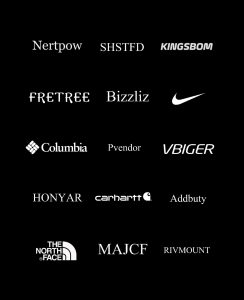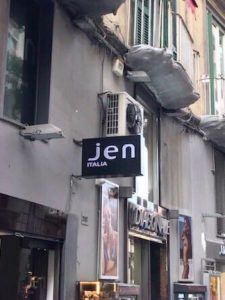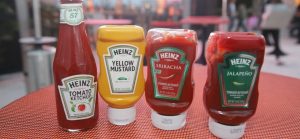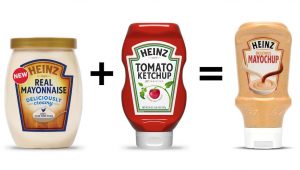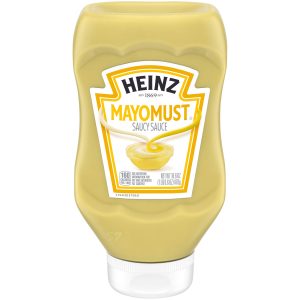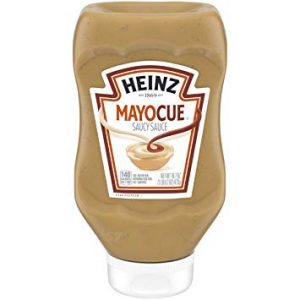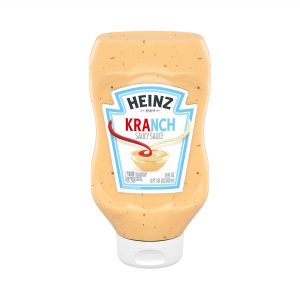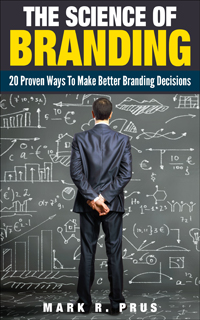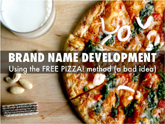News
Are Pseudo-Brands Really Brands?
One of these things is not like the other. Actually, quite a few of them are very different. But all of them claim to be “brands.” I know this because they are names of various things being sold on Amazon and yes, these names are registered in the US Trademark Office.
Illustration by The New York Times
But are they really “brands?”
Welcome to the world of “Pseudo-Brands.” You see, Amazon likes products that are branded. And some manufacturers do not want to put any effort into developing a brand name that has meaning. This is how you end up with a name like MAJCF for winter gloves. The manufacturer needs to get a name through the US Trademark Office and the easiest way to do that is to make the name non-sensical (so there are no potential trademark conflicts).
A recent New York Times article exposed this new wave of “branding.” Here is the article:
https://www.nytimes.com/2020/02/11/style/amazon-trademark-copyright.html
Of course, as a professional name developer, this is an affront to my core beliefs. Yes, there is extra effort in developing a great brand name that communicates meaning, and yes getting it through the US Trademark Office is often difficult. If it were easy nobody would hire me! But I can assure you, developing a real brand name is always worth it!
Pseudo-Brands only confuse. Real brands matter! Invest in your future and develop a real brand!
Brandless Is Dead – Long Live Brands!
About two and a half years ago, Brandless was launched. The company sold “unbranded” household, personal care, baby, and pet products on the cheap and was viewed as a breakthrough in the “anti-branding” movement.
[Photo: John Sciulli/Getty Images for Brandless]
At the time it launched, I got a lot of flack from “anti-branders” who claimed that Brandless would be the downfall of traditional brands. Who needs to pay the middleman and the marketer in order to buy decent products? Who needs to invest in a brand name?
Allow me to repeat what I said back then: “BRANDS MATTER.”
The Brandless website attributes the failure to the crowded e-commerce market: “While the Brandless team set a new bar for the types of products consumers deserve and at prices they expect, the fiercely competitive direct-to-consumer market has proven unsustainable for our current business model.”
Allow me to rephrase this. Brandless failed to demonstrate proper value to consumers of their products. This is what a good brand can help do, but Brandless failed to establish itself as a quality brand that was worth trusting.
The irony is Brandless was actually a good brand name and a good business concept. However, they failed to recognize (or admit to) the power of the brand. The external validation of the concept is being delivered by competitors such as Public Goods who is doing a much better job of building a brand.
I’ll say it again…BRANDS MATTER!
Branding The Placebo Effect
For many years I’ve admired the positioning work behind the Nurofen brand of painkiller. They positioned the product as “targeted relief from pain” and had a wonderful demo that visually demonstrated how the product could target specific areas of pain.
Reckitt Benckiser had several products that addressed specific pain areas, including Nurofen Back Pain, Nurofen Period Pain, Nurofen Migraine Pain and Nurofen Tension Headache. Brilliant marketing…although it was not quite truthful.
You see, all the products contained exactly the same active ingredient in the exact same dosage. In fact, all that was different was a different package and label. And the active ingredient does not fly around and locate itself where the pain is…it works throughout the body.
The Australian Competition and Consumer Commission brought down the house of cards and levied a $6 million fine because the company “had profited substantially from misleading customers.”
Legally this was the right thing to do. But from a drug effectiveness standpoint, it probably was wrong. You see, the placebo effect in drugs is very high. Placebos cannot lower your cholesterol, but they can alter your perception of pain. For example, studies have shown that red pills relieve pain better than any other color. Imagine what the very specific positioning of these Nurofen products could do. Even with the same active ingredient and dose, the placebo effect ensures that your period pain would be better relieved by a specific product like Nurofen Period Pain rather than a generic ibuprofen.
I’m not suggesting that misleading consumers is a good idea. Rather, I’m acknowledging that the placebo effect exists and it can be used to imply effectiveness via very specific brand names (just please make something different in the product…not just a label!).
“That which we call a rose by any other name would smell as sweet.” William Shakespeare
Have you eaten Patagonian toothfish? Ewww, right? Well, if you have eaten Chilean sea bass you have eaten Patagonian toothfish. An American fish wholesaler changed the name to make it more palatable, even though the toothfish is not related to bass and most of the fish labeled as Chilean sea bass does not come from Chile!
There is a long history of rebranding fish to make it more palatable. Here are a few more examples:
Orange roughy was originally slimehead.
Monkfish was originally goosefish.
Sea urchin (Uni on your favorite sushi restaurant’s menu) was originally whore’s eggs.
Peekytoe crab was originally mud crab.
Fish wholesalers are not the only ones who change names to change perceptions. The drug industry has been doing this for years. Urinary incontinence became “light bladder leakage.” Impotence became erectile disfunction. Changing a name changes the perceptions of the disease.
Do you have something you need to rename? We can help!
XLERATOR®
Quick, how did you pronounce that name?
Here is the logo design on the product…does it help or hurt the pronunciation?
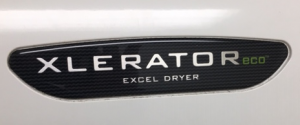
I won’t go into my thoughts on the name itself (i.e., is it a #GoodName or a #BadName?).
But I will make a point about how you can use logo design to encourage proper pronunciation of your name.
The way the name appears on the wall mounted hand dryer is block letters all connected: XLERATOR. If you try to pronounce it you will find the initial X to be difficult, and might end up calling the brand X-lerator. However, I’m almost certain the company wants you to pronounce it as “EXCELERATOR.”
One way to encourage proper pronunciation would be to space the brand name a bit…maybe go with XL ERATOR. Or perhaps you bold the XL and make it look like: XLERATOR. With some simple visual cues, the name becomes easier to pronounce.
I’m not a graphic designer but I’m sure a good one could name hundreds of other ways to encourage proper pronunciation. Developing a name is only one part of branding. Don’t forget the visual aspects of branding!
If You Have To Make A Video Explaining How To Pronounce Your Name, Is That A Good Name Or A Bad Name?
Porsche® announced its newest sports car which is an all-electric vehicle targeting Tesla buyers. The call it Taycan®. No, it’s not pronounced tay-can.
In fact, Porsche was so concerned about mis-pronunciation of the name it made a video about how to pronounce the name!
Tie-con it is!
It is a beautiful car, and I like the story behind the name. It’s not for everyone of course ($150,000+) but Porsche cars have never been mass market items.
According to Porsche, the name Taycan roughly translates from Turkish as “lively young horse” in reference to the historical Porsche crest and the exciting future of a new breed of sports car.
Of course, if you can’t properly pronounce Taycan, you are probably pronouncing Porsche wrong too…fortunately Porsche made a video about that as well:
Another Fail in International Branding
Yes folks, they actually call themselves Jen Italia.
This is a curious name because there is no “j” in the Italian language…it is used only for foreign words. Yet, this Italian footwear store chose a name that references sex organs. Go figure.
I’m guessing that the founders were oblivious to the way the name would be pronounced in English, or they were aware and decided to be controversial. Nevertheless, I count this one as a branding fail.
People who name companies, products or services really need to check out international communication of their names! FYI here is a firm that can help (Shout out to Dagmar Dolatschko!)
When Product Development Yields Portmanteau Names
port·man·teau
/ˌpôrtˈmantō/
noun
A word blending the sounds and combining the meanings of two others, for example motel (from ‘motor’ and ‘hotel’) or brunch (from ‘breakfast’ and ‘lunch’).
Sometimes portmanteau names can be great combinations that help communicate the concept behind the brand. Microsoft is a portmanteau of microcomputer and software. Groupon combines group and coupon. Instagram combines instant (camera) and telegram. These are fantastic combinations that subtly reveal the underlying brand positioning, which aids in the memorability of the brand name.
Sometimes portmanteau names are lazy combinations that just don’t work (see the POOLIFE combination in this post). https://nameflash.com/2018/08/the-perils-of-portmanteau-names/
And sometimes, portmanteau names are simply the result of clever product development ideas.
Heinz (Kraft Heinz Company: NASDAQ: KHC) is product development wizard as they regularly introduce new items to capture the imagination of condiment users. For example, a few years ago they introduced sriracha and jalapeño flavored ketchup. And they called them… sriracha and jalapeño flavored ketchup. Not exactly names that lend themselves to PR pickup.
But recently they launched another combo product…and called it MAYOCHUP.
Classic use of the portmanteau technique: MAYONNAISE + KETCHUP = MAYOCHUP. The internet exploded.
But Heinz did not stop there. Their product development pipeline kicked in other condiment combinations, yielding:
Heinz even reached into the pantry of Kraft to add barbecue sauce and ranch dressing:
Heinz has always had excellent product development ideas, but now they have discovered the portmanteau method of naming to reinforce the 1 + 1 = 2 product positioning behind the combination of condiments.
If Heinz had this formula when they were launching the sriracha flavored ketchup they might have called it SRIRACHUP. Now, unfortunately for Heinz, the name SRIRACHUP has already been trademarked by a competitor…but why not KETCHACHA?
What future combinations can we expect from the Kraft Heinz Company?
This Is How You Do It
It’s that time of year! Baseball Spring Training is here! In honor of this, I’m looking at the fun names in Minor League Baseball. Some of them demonstrate the key principles of name development!
Minor League Baseball team names can be dull and boring. For example, there are some that just reflect the name of the parent Major League Team (e.g., Oklahoma City Dodgers, Syracuse Mets, Springfield Cardinals or Iowa Cubs). Yawn.
Or maybe they use a traditional animal such as the Burlington Bees or the classic Durham Bulls. These are a little more interesting, but not especially engaging.
Some teams are “swinging for the fences” with their names. When you think about what is important in naming your minor league team, you should focus on 3 things. Team names should be fun, relevant to the local population, and quirky enough to be memorable.
Here are some examples of team names that are “hitting it out of the park.”
The Madison, Alabama, Rocket City Trash Pandas – Yes, there is a large NASA facility nearby (that includes Space Camp) in Huntsville so the “Rocket City” moniker is no surprise. The Trash Pandas came from a consumer contest and won the public vote by a large margin. The previous team name was the uninspiring Mobile BayBears. For the record, the other finalists were space-animal combinations: Moon Possums, ThunderSharks, Space Chimps, and Comet Jockeys.

Even though the Trash Pandas won’t start playing until 2020, they broke the three-month sales record for merchandise sold by a rebranded Minor League Baseball team with over $500,000 in merchandise moved in nearly 3,500 online orders.
The El Paso Chihuahuas – When the former Tuscon Padres moved to El Paso in 2013 the team ran a naming contest and fans chose between these finalists: Aardvarks, Buckaroos, Chihuahuas, Desert Gators, and Sun Dogs. While Team Management was initially a little apprehensive about the name, their focus on fun drove sales of Chihuahuas merchandise to record setting levels.

The New Orleans Baby Cakes – According to a team PR release, the Baby Cakes name is “A tribute to the Mardi Gras king cakes where small plastic babies are sought after.” In the 2017 rebranding, the former New Orleans Zephyrs held a name-the-team contest and the finalists were Baby Cakes, Crawfish, King Cakes, Night Owls, Po’boys, Red Eyes, and Tailgators.

Although the Baby Cakes name was initially met with mixed reactions, the team reported increased merchandise sales after the announcement and the rebrand set a record for online merchandise orders. Of note, the team awarded a free lifetime pass to any baby born in the state of Louisiana during 2017 and was entered into a raffle to win a full four-year tuition to a state college in Louisiana upon their 18th birthday in 2035.
In 2019 the Amarillo Sod Poodles begin play – Per the team, Sod Poodles is a “pioneer’s nickname for ‘Prairie Dogs.’” This name emerged victorious in a “Name the Team” contest, triumphing over other selections rooted in Amarillo’s Texas Panhandle location: Boot Scooters, Bronc Busters, Jerky and Long Haulers.

The Jacksonville Jumbo Shrimp – Previous renditions of teams in Jacksonville included the Jacksonville Expos (referencing the parent Montreal Expos) and the Jacksonville Suns. You’ve got to admit that the Jacksonville Jumbo Shrimp is an upgrade, even if it is an oxymoron.

And speaking of oxymoron, the Jacksonville Jumbo Shrimp was an answer on Jeopardy earlier this year!Jacksonville Jumbo Shrimp✔@JaxShrimp

Hey @thereal4smo – we loved your work on @Jeopardy tonight. Can we interest you in to coming to Jacksonville for a ballgame this season? Follow back and message us if you’re interested!
If you want to check out the bible of the weird team names of Minor League Baseball, check out this book: Root for the Home Team: Minor League Baseball’s Most Off-the-Wall Team Names and the Stories Behind Them.
Someday I’d like to work in the “Funnest” brand name category in America–Minor League Baseball Teams!
Can I Buy A Vowel?
In a recent article in The New York Times, John Williams discussed the evolution of our language through the “vowel dropping” trend.
He mentions the use of vowel dropping in naming tech companies, as tech companies like Tumblr and Flickr dropped vowels “…both for distinctiveness and because the altered names made it easier to trademark, claim domain names on the internet and conduct other practical business.”
In my book The Science of Branding, I noted that the human brain has the ability to “fill in” the gaps caused by vowel dropping. For example, read this sentence and you’ll see how distortion of words does not impair communication:
“It deosn’t mttaer in waht oredr all the ltteers in a wrod are. You can stlil raed it wouthit a porbelm bcuseae the huamn mnid wroks by a porecss of ptatern rceigontion. It dtemrines maennig bfoere porecssnig dteails.”
Isn’t tihs amzanig? Your brain can make sense of even the most chaotic situation.
But just because you can, doesn’t mean you should. Dropping vowels is not always a good strategy for name development. While dropping vowels can make acquisition of .com domains easier, it does not guarantee that getting a trademark will be easier. One important reason for avoiding this strategy is it can distort consumer communication.
One of the most important considerations in evaluating a name is the ability of people to remember the name. Test your “day after recall” with some members of the target audience. Make sure they can pronounce and spell it correctly the day after hearing it. If they can’t repeat it and get it right, then they won’t be able to find your product or service on the web. If they can’t properly recall it then they won’t be able to tell a friend about the name in a way that the friend can find it. Net, net, if the name is too difficult to recall properly, then it won’t be a good name (unless of course you have a lot of money to invest in awareness-generating advertising).
